Which food should you sample while in Russia?
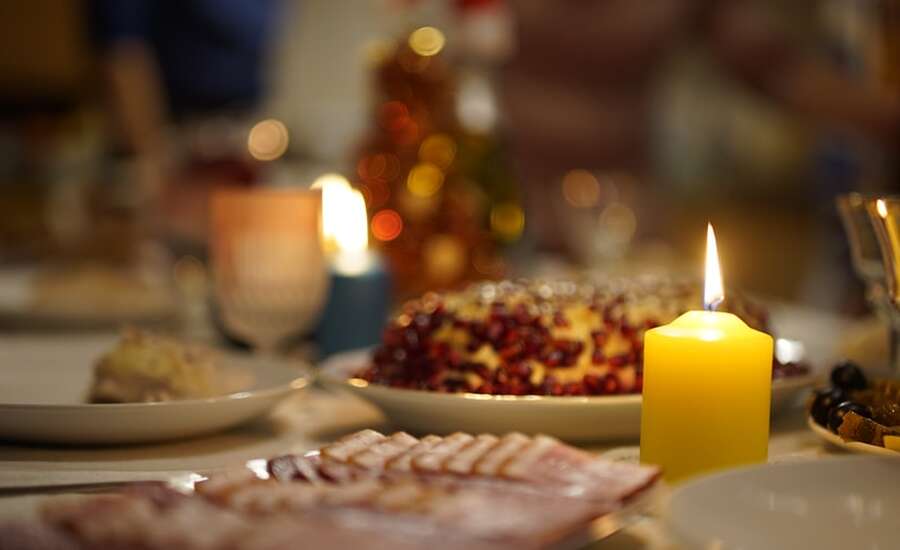
What are the best dishes to sample when travelling in Russia?
- Pelmeni are a staple meal for Russians. These dumplings were popularised by Siberian hunters who needed meals on the go, and there are many different varieties for meat lovers and vegetarians
- Blini are delicious pancakes similar to French crepes. They can be stuffed with any kind of filling, sweet or savoury, and are central to Russia’s week-long Shrovetide festival
- Olivier Salad is the gastronomical centrepiece of Russian New Year celebrations. Invented nearly 200 years ago in Moscow and adapted during Soviet times, Olivier Salad is one of the Russian people’s most favourite dishes
- Shashlyk is the Russian take on barbecued kebob, and no dacha weekend is complete without it. Meat is grilled with a special family recipe, and even the smell will have your mouth watering
- Syrniki are the warmest way to start the day. These cottage cheese pancakes are golden and crispy on the outside and soft on the inside, best eaten smothered with jam or sour cream
Russian food can safely be classified as comfort food. Rich, hearty and warming, perfect for abating the winter chill. Russians love their food and you can try it for yourself at a restaurant, or if you’re lucky, dining with a Russian friend at their home. Expect course after course punctuated with jolly toasts, your plate will be refilled more times than you could dream of, and it would be offensive to leave hungry! Read on for some must-try dishes.
Блины - Blini

One of Russia’s most famous dishes, traditionally eaten during Maslenitsa (Shrovetide) as a rich supper on the eve of Lent, and because their circular shape celebrates the sun returning after many months of winter.
An interesting Russian phrase goes ‘Продал душу ни за овсяный блин’ - ‘I sold my soul for pancakes’ - having tasted blini, you’ll be inclined to agree. They are similar to French crepes or very thin American pancakes, stuffed with all manner of fillings. Simple fillings include сгущёнка (condensed milk), сметана (sour cream), or варенье (thick jam). Other popular fillings are smoked salmon and sour cream, caviar, or minced beef.
Russia has a popular chain of restaurants called ‘Teremok’, where customers are treated to dozens of different blinis at reasonable prices. And if you’re in Russia during February, make sure to head to the Maslenitsa festivals and fill up on blini!
Пельмени - Pelmeni
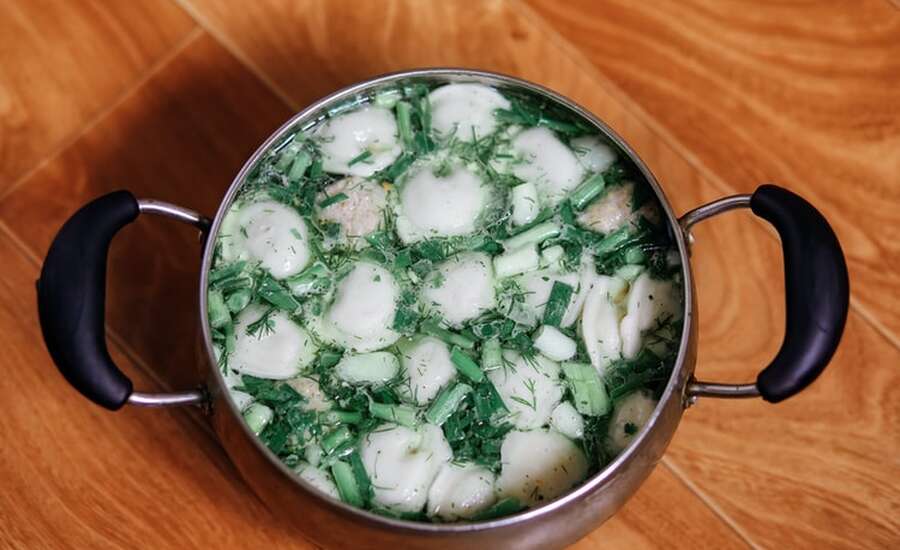
These delicious dumplings are perfect for a cold winter evening, and are a staple meal, the Russian cousin to Italian tortellini. Pelmeni originate from Siberia - hunters would take sacks of pelmeni on trips, as the dumplings stayed frozen in the bitter Siberian weather and could easily be boiled at mealtimes.
Typical fillings include beef, pork or lamb, and sometimes fish. Pelmeni are traditionally served with butter, sour cream and dill, but can be served in a broth or even fried. Try them with a dash of vinegar and ketchup as well! Vegetarian pelmeni take the form of vareniki - larger, semicircular dumplings. Popular fillings are potato, cheese or mushroom, but vareniki can also be stuffed with cottage cheese or berries.
Pelmeni are a quick and easy dinner to make yourself or can be eaten at пельменная (special pelmeni restaurants).
Борщ- Borsch
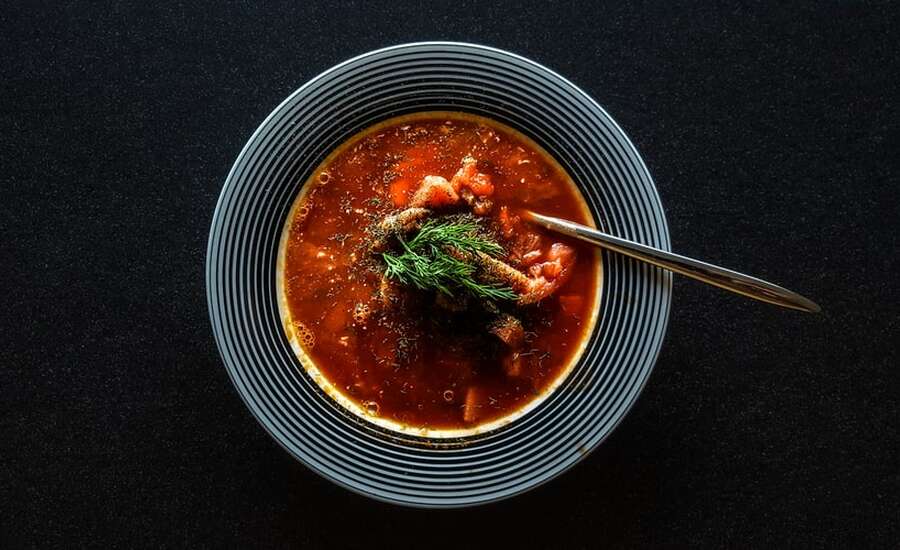
A thick, warming soup, there’s no better way to combat the cold than a bowl of borsch. This dish gets its rich colour from beetroot, and contains potatoes, onions and carrots, and usually beef or pork, although vegetarian options are available. Russians like to eat borsch with a big dollop of sour cream on the top! It is found at all manner of Russian restaurants, and for those looking for a cheap and quick lunch, the столовая (canteen) is a great option.
Пироги - Pirogi
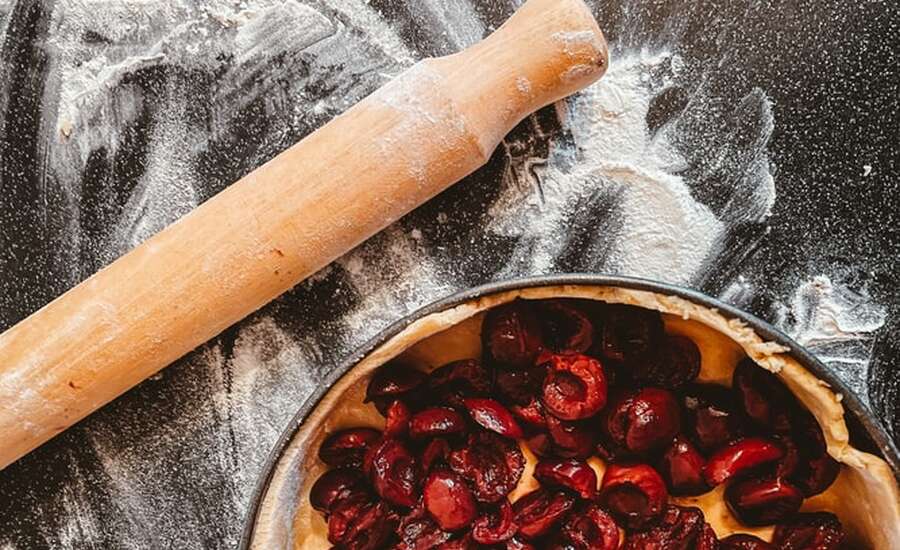
Delicious pies baked with a variety of fillings and a decorative topping. Pirogi are perfect for a snack on the go or a quick breakfast. They are often part of the buffet at Russian parties - suitable, considering that their name derives from the Proto-Slavic word for ‘banquet’ and ‘festivity’!
Popular sweet pirogi include apple and lingonberry, or cottage cheese. Common savoury options contain chicken and mushroom, cabbage, or meat. Pirogi can be found at most bakeries, the St. Petersburg chain cafe ‘Pirogovy Dvorik’ offers an enormous variety.
Икра - Caviar
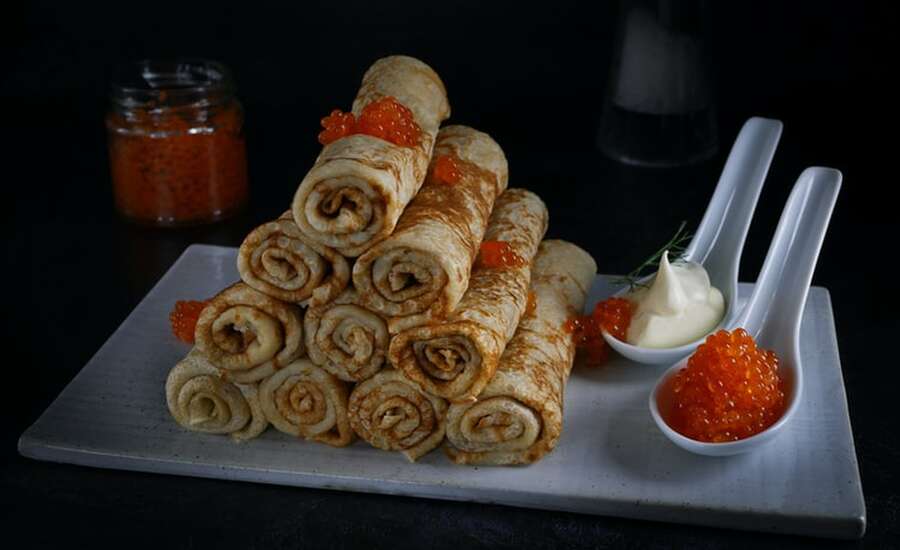
One of the delicacies most commonly associated with Russia is, of course, caviar. It has been consumed in Russia for over 1,000 years.
Beluga sturgeon caviar, known as ‘black gold’, is one of the most precious food products you can buy. Tourists are only permitted to take 250g of black caviar out of Russia. Red caviar is significantly cheaper, but still popular and tastes great. Russians eat caviar with bread and butter, but it can also be served on blinis or on its own with vodka.
Салат Оливье - Olivier Salad
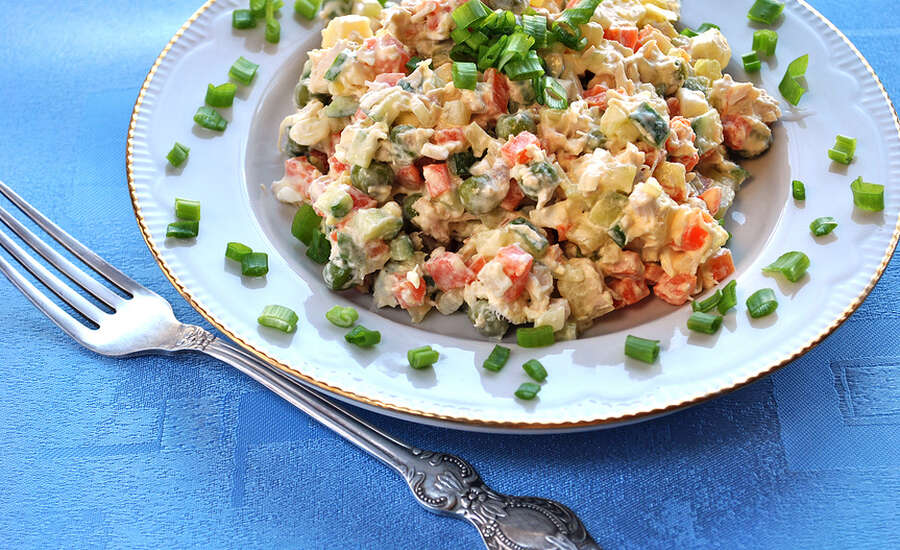
Photo by Iana1501, Photobank Lori
A ubiquitous presence at every social gathering in Russia, and the traditional dish of New Year celebrations, Olivier Salad is what most people know as ‘Russian Salad.’
It was invented by Belgian chef Lucien Olivier at one of Moscow’s most prestigious restaurants and included caviar, crayfish, and grouse. Versions of the salad were popularised over time, and in Soviet Russia gourmet ingredients were replaced by accessible ones.
Grouse was replaced by sausage, crayfish by hard-boiled egg, olives and capers by green peas and pickles, and French vinegar and olive oil by mayonnaise. And there you have it, the modern-day Olivier Salad! The combination of ingredients may sound strange, but it really tastes wonderful.
Голубцы - Golubtsy
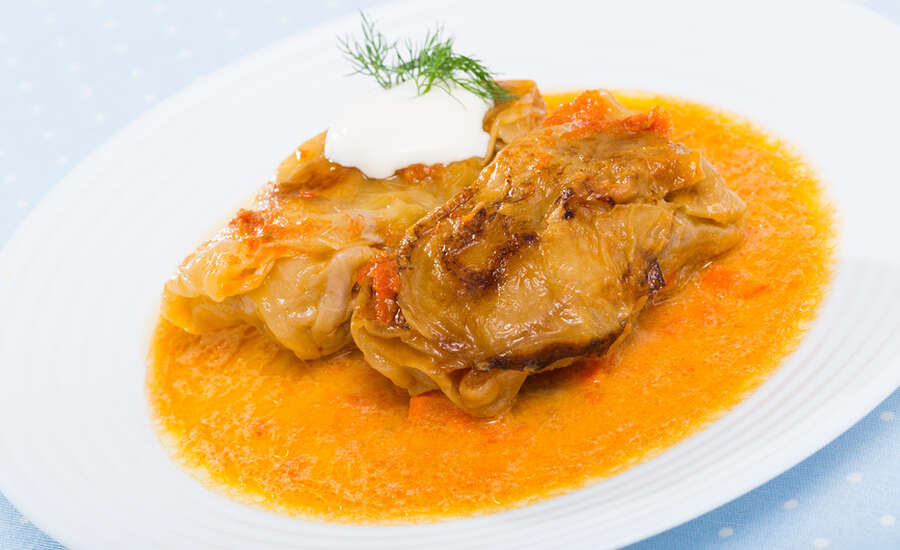
Photo by Yakov Philimonov, Photobank Lori
Cabbage leaves stuffed with beef, pork or lamb seasoned with garlic and onion, and served with smetana, tomato sauce and rice. The name ‘golubtsy’ means ‘little pigeons’ in Russian, referring to the French method of cooking a pigeon wrapped up in cabbage leaves.
Гренки - Grenki
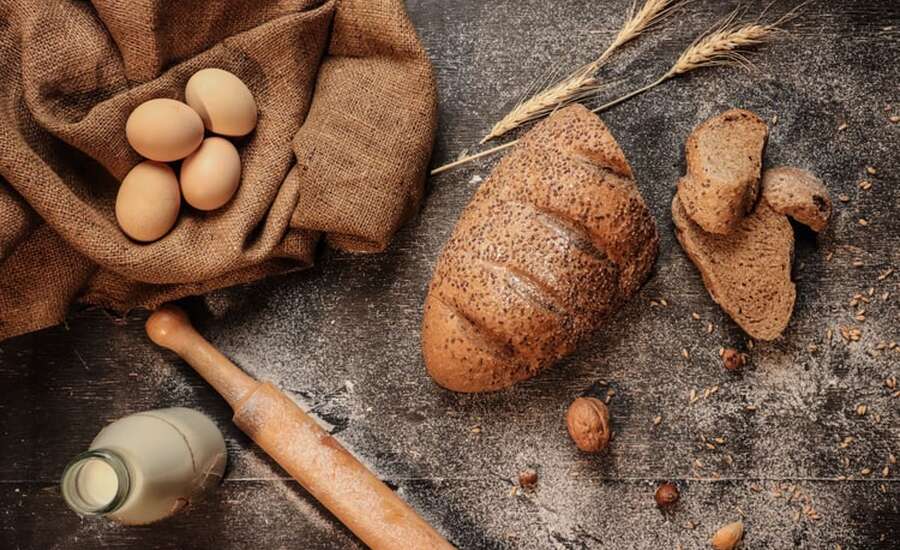
The Russian version of French toast! Grenki are pieces of bread dunked in beaten egg, deep fried, and served warm with grated cheese and garlic. They are the perfect bar snack to share with friends, washed down with a cold beer.
Шашлык - Shashlyk
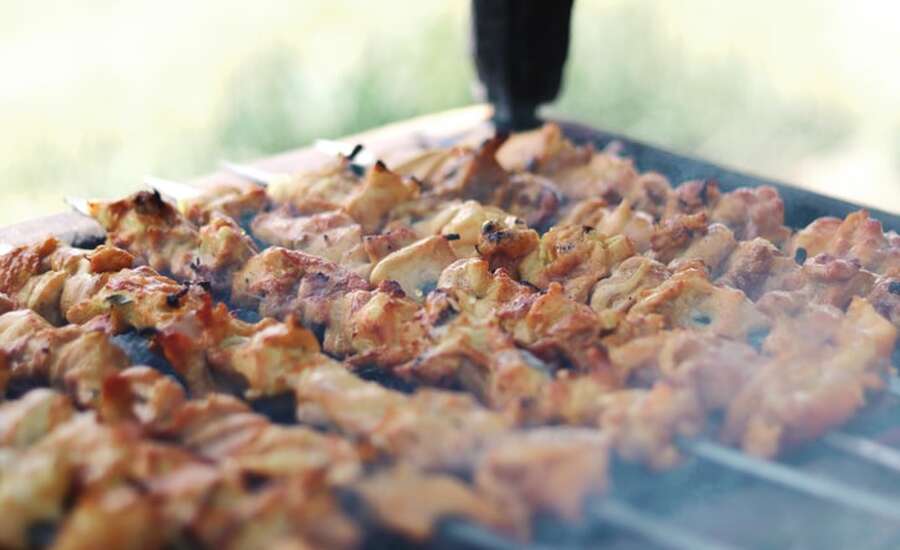
Shashlyk is basically the Russian version of Shish Kebob. It is a dish prepared on an open grill (usually outdoors) which originated in the Caucasus. Each family has their own recipe to make the perfect shashlyk - for example, marinating the meat in special sauces, secret combinations of herbs and spices, or even fizzy water!
Shashlyk is commonly served at restaurants and street-food stalls. But predominantly it is a mainstay of dacha life - if you’re lucky enough to be invited to the dacha for the weekend, you’ll experience the real deal.
Сырники - Syrniki
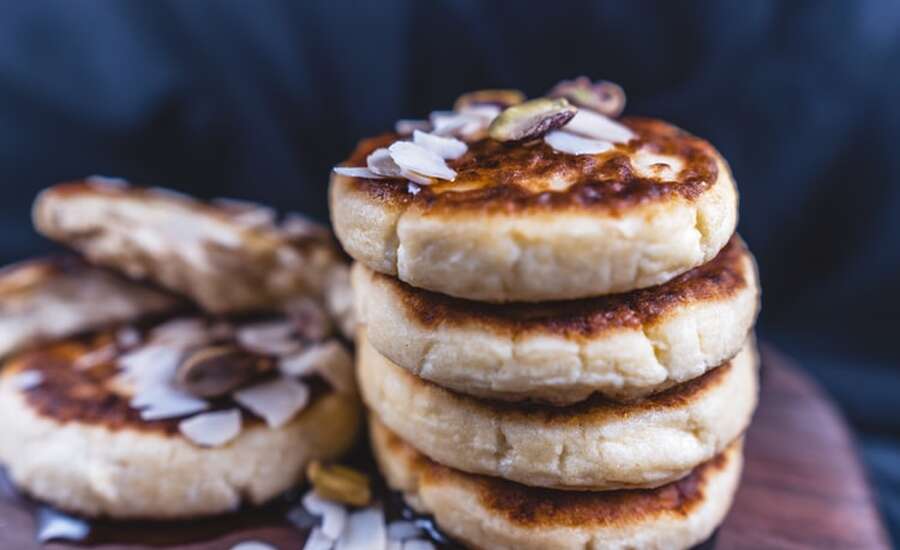
These glorious cottage cheese pancakes are the perfect way to start your day. Творог (cottage cheese) is mixed with flour, eggs and sugar, shaped into patties, and fried until golden on the outside, and pillowy on the inside. Russians often eat syrniki with sour cream or jam.
You can find special syrniki restaurants which offer a range of toppings, and they can also be bought at bakeries. But the best syrniki, of course, are fresh from the pan at home.
If you are coming to Russia for Christmas and New Year holidays you may also want to try the following traditional Russian New Year meals.
Photos by @virussinside @spiridonov @tengyart @madmax_chef @hectorfarahani @tstudio @habibdadkhah @maxniceman @helloimnik @mockupgraphics



